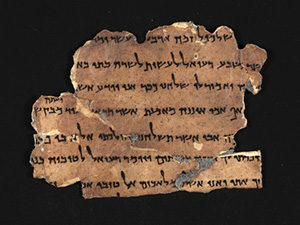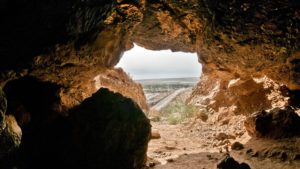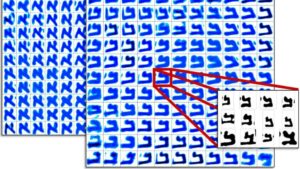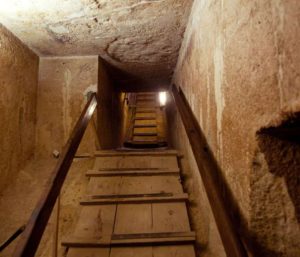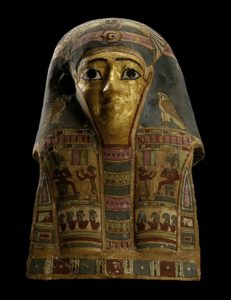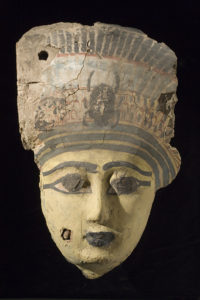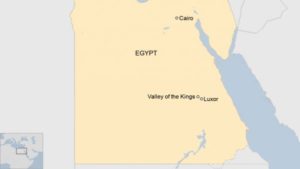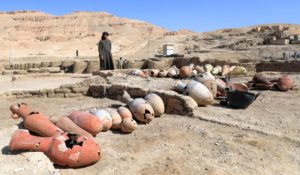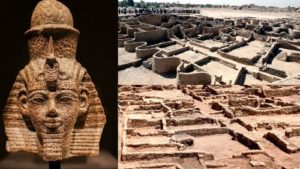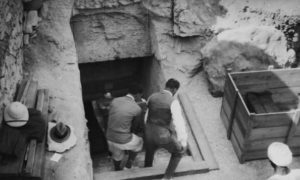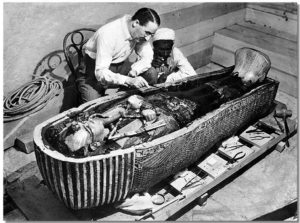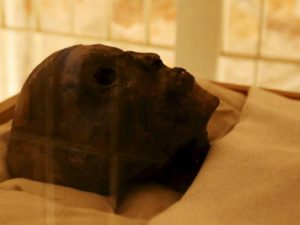10,500-year-old Stone Age Hunter-Gatherer Settlement Found in England
The discovery of a 10,500-year-old Stone Age hunter-gatherer settlement in England is remarkable for several reasons. First, it is the oldest hunter-gatherer settlement ever found in Britain and the remains of this settlement provide us with a fascinating glimpse into the lives of the inhabitants. The settlement was found by archaeologists near the town of Peterborough, in the northeast of England. At the site, the archaeologists uncovered evidence of a large settlement, complete with postholes, pits, and hearths. These features indicate that the settlement was large and well established, and likely home to around 100 people. The artifacts found at the site are also quite remarkable. The archaeologists have uncovered a variety of tools and artifacts, such as flint tools, animal bones, and small pieces of pottery. These artifacts suggest that the inhabitants of the settlement were engaged in a variety of activities, including hunting, fishing, and gathering. The animal bones, in particular, suggest that the inhabitants hunted a variety of animals, including deer and wild boar.
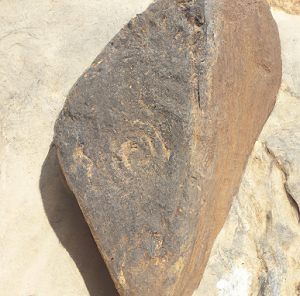
The settlement provides us with invaluable insight into the lives of the people living in this area 10,500 years ago. It is clear that the inhabitants of the settlement were well adjusted to the environment, and were skilled hunters and gatherers. They were also able to make use of the natural resources available to them, such as flint for making tools and animal bones for making tools and weapons. The discovery of this settlement is a significant discovery for archaeologists and historians, as it provides us with an insight into the lives of the people living in the area during the Stone Age. The artifacts found at the site provide us with a fascinating glimpse into the lives of the people who lived in this area 10,500 years ago. It is clear that the inhabitants of the settlement were well adapted to the environment and had a good understanding of the resources available to them. The discovery of this settlement provides us with a unique window into the past and helps us to understand more about the lives of the people living in this area during the Stone Age.
Dead Sea Scrolls
The Dead Sea Scrolls are ancient Jewish and Hebrew religious manuscripts that were found in the Qumran Caves in the Judaean Desert, near Ein Feshkha on the northern shore of the Dead Sea in the West Bank, and the last discovered scrolls found in the Cave of Horror in Israel.
Researchers say Artificial Intelligence (AI) has for the first time shown that two scribes wrote part of the mysterious ancient Dead Sea Scrolls
- Tests were carried out on the longest text, known as the Great Isaiah Scroll.
- It was found that probably two unknown individuals had copied down the words using near-identical handwriting.
- The scrolls, which include the oldest known version of the Bible, have been a source of fascination since their discovery some 70 years ago.
- The first sets were found by a Bedouin in a cave at Qumran near the Dead Sea in what is now the Israeli-occupied West Bank.
- They contain manuscripts, mostly written in Hebrew as well as Aramaic and Greek, and are believed to date from about the Third Century BC.
The Dead Sea Scrolls include a guide to hidden treasure
One of the most intriguing manuscripts from Qumran is the Copper Scroll, a sort of ancient treasure map that lists dozens of gold and silver caches. While the other texts are written in ink on parchment or animal skins, this curious document features Hebrew and Greek letters chiseled onto metal sheets—perhaps, as some have theorized, to better withstand the passage of time. Using an unconventional vocabulary and odd spelling, the Copper Scroll describes 64 underground hiding places around Israel that purportedly contain riches stashed for safekeeping. None of these hoards have been recovered, possibly because the Romans pillaged Judaea during the first century A.D. According to various hypotheses, the treasure belonged to local Essenes, was spirited out of the Second Temple before its destruction or never existed to begin with.
From Egypt to Aleppo
At the end of the 14th century, the Aleppo Codex was brought from Egypt to Aleppo, Syria, and placed in the “Cave of Elijah” in the city’s ancient synagogue, in a metal chest sealed with a double lock, far from public view. The Jews of Aleppo saw the Codex as the most important manuscript in their possession – so much so, that judges were sworn in with it, and magical, protective powers were attributed to it. It was strictly forbidden to sell the Codex or even remove it from the synagogue, as written on the title page, “Sacred to the Lord. . . . It shall be neither sold nor redeemed. . . . Blessed be he who guards it, accursed be he who steals it . . . .” The members of the community believed that if this injunction were violated, they would be severely punished.
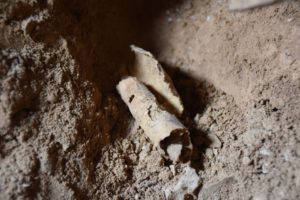
Besides the Aleppo Codex, the Jewish community of Aleppo owned three other important codices. One of them, known as the “Small Codex,” was probably written in Italy in 1341 by an Ashkenazi scribe. Its main part comprises the Pentateuch, with vocalization and cantillation marks and an Aramaic translation. Masoretic notes are inserted between the columns, and Rashi’s commentary appears in the upper and lower margins. The Small Codex also includes an additional text of the Pentateuch in tiny Hebrew letters – without the translation, vocalization, and cantillation marks – as well as the Song of Songs with Rashi’s commentary, the Five Scrolls, the sections from the Prophets read in the synagogue after the Torah reading (haftarot), and a commentary (midrash) on the Masorah. It is currently on display at the Shrine of the Book.
Egyptian Pyramids
The Egyptian Pyramids are described as pyramid-shaped monuments, constructed mostly as funerary tombs and ceremonial complexes for the departed pharaohs during the Old Kingdom (2575 BC to 2150 BC) and Middle Kingdom (2050-1550 BC) periods.
To date, approximately 118 pyramids of various definitions have been discovered across Egypt , mainly sited on the west bank of the River Nile and grouped into several clusters or pyramid fields.
A later resurgence in pyramid construction took place in the Kingdom of Kush, after much of Egypt came under the rule of the Kushites. The Meroitic period, centred on the region of Meroë, also called the “Island of Meroë” (in modern-day Sudan) saw the construction of over two hundred pyramids across four pyramid clusters.
Architecture of Pyramid.
Old Kingdom the most characteristic form of tomb building was the true pyramid, the finest examples of which are the pyramids at Al-Jīzah (Giza), notably the Great Pyramid of King Khufu (Cheops) of the 4th dynasty. The form itself reached its maturity in the reign of Snefru, father of Khufu, who constructed three pyramids, one of which is known as the Bent Pyramid due to its double slope. Subsequently only the pyramid of Khafre (Chephren), Khufu’s successor, approached the size and perfection of the Great Pyramid. The simple measurements of the Great Pyramid indicate very adequately its scale, monumentality, and precision: its sides are 755.43 feet (230.26 metres; north), 756.08 feet (230.45 metres; south), 755.88 feet (230.39 metres; east), 755.77 feet (230.36 metres; west); its orientation on the cardinal points is almost exact; its height upon completion was 481.4 feet (146.7 metres); and its area at the base is just over 13 acres (5.3 hectares). The core is formed of huge limestone blocks, once covered by a casing of dressed limestone. Other features in its construction contribute substantially to its remarkable character: the lofty, corbeled Grand Gallery and the King’s Chamber—built entirely of granite—with five relieving compartments (empty rooms for reducing pressure).
Inside the Great Egypt
The Pyramids of Giza, like the Egyptian pyramids that came before and after them, were royal tombs, a final resting place for their pharaohs, or kings. They were often part of an extensive funerary complex that included queens’ burial sites and mortuary temples for daily offerings. The pharaoh’s final resting place was usually within a subterranean burial chamber underneath the pyramid. Although the Great Pyramid has subterranean chambers, they were never completed, and Khufu’s sarcophagus rests in the King’s Chamber, where Napoleon is said to have sojourned, deep inside the Great Pyramid.
Egyptian Mummies
The methods of embalming, or treating the dead body, that the ancient Egyptians used is called mummification. Using special processes, the Egyptians removed all moisture from the body, leaving only a dried form that would not easily decay. It was important in their religion to preserve the dead body in as life-like a manner as possible. So successful were they that today we can view the mummified body of an Egyptian and have a good idea of what he or she looked like in life, 3000 years ago.
Mummification was practiced throughout most of early Egyptian history. The earliest mummies from prehistoric times probably were accidental. By chance, dry sand and air (since Egypt has almost no measurable rainfall) preserved some bodies buried in shallow pits dug into the sand. About 2600 B.C., during the Fourth and Fifth Dynasties, Egyptians probably began to mummify the dead intentionally. The practice continued and developed for well over 2,000 years, into the Roman Period (ca. 30 B.C.–A.D. 364). Within any one period the quality of the mummification varied, depending on the price paid for it. The best prepared and preserved mummies are from the Eighteenth through the Twentieth Dynasties of the New Kingdom (ca. 1570–1075 B.C.) and include those of Tutankhamen and other well-known pharaohs. It is the general process of this period that shall be described here.
The discovery of a 3,000-year-old city that was lost to the sands of Egypt has been hailed as one of the most important archaeological finds since Tutankhamun’s tomb.
On Thursday, Egypt announced the discovery of one of the most important finds since the unearthing of King Tutankhamun’s tomb almost 100 years ago in 1922. A 3000-year-old “lost golden city” from the era of 18th-dynasty king Amenhotep III, who ruled ancient Egypt from 1391 to 1353 B.C., was found in the southern province of Luxor, near some of the country’s best-known monuments. Isn’t that fascinating?According to the experts, the city is believed to have been used by Tutankhamun and his successor Ay during a period widely believed to be the golden era of ancient Egypt.
Tutankhamun’s coffin removed from tomb for first time
“The discovery of this lost city is the second most important archaeological discovery since the tomb of Tutankhamun,” Betsy Brian, professor of Egyptology at Johns Hopkins University in Baltimore, US, said.
She said the city would “give us a rare glimpse into the life of the ancient Egyptians” at the time when the empire was at its wealthiest.
The dig revealed a large number of valuable archaeological finds, such as jewellery, coloured pottery, scarab beetle amulets and mud bricks bearing seals of Amenhotep III.
The team began excavations on the west bank of Luxor near the Valley of the Kings, some 500 km (300 miles) south of the capital Cairo.
“Within weeks, to the team’s great surprise, formations of mud bricks began to appear in all directions,” Dr Hawass said in his statement.
“What they unearthed was the site of a large city in a good condition of preservation, with almost complete walls, and with rooms filled with tools of daily life.”
Now, seven months after the dig started, several areas or neighbourhoods have been uncovered, including a bakery, an administrative district and a residential area.
“Many foreign missions searched for this city and never found it,” said Dr Hawass, a former antiquities minister.
Scans of King Tut’s Tomb Reveal New Evidence of Hidden Rooms
Second round of radar scanning will look for more clues to what lies behind the walls of Tut’s burial chamber. One theory: the tomb of famous Queen Nefertiti.
For at least 3,339 years, nobody has seen what lies behind the west and north walls of the burial chamber of Tutankhamun. But this secret of three millennia might not last much longer.
On Thursday, Mamdouh Eldamaty, the Egyptian antiquities minister, held a press conference in Cairo to announce a tantalizing new piece of evidence: Radar scans on those walls have revealed not only the presence of hidden chambers, but also unidentified objects that lie within these rooms. These objects, Eldamaty said, seem to be composed of both metal and organic materials.
“It could be the discovery of the century,” he said. Noting that he can’t speculate further about the things that lie within the chambers, he said that another radar test has been scheduled for the end of this month, in order to determine the best way to proceed with the investigation.
The results of the radar scan represent another step toward a radical new understanding of the most famous tomb in Egypt’s Valley of the Kings. First discovered by archaeologist Howard Carter in 1922, the tomb of King Tut yielded an astonishing array of grave goods—more than 5,000 artifacts, many of them in pristine condition. It was the most intact royal tomb ever found, providing Egyptologists with an unprecedented glimpse into the material life of a king who ruled during the 14th century B.C.

